Your walls are the visual foundation of your room; they are more than just surfaces. The choice of wallpaper and paintings can drastically alter the tone of a space, regardless of whether you are aiming for gentle elegance or a bold personality. So, how do you choose the one that best suits your area? And how do you choose a design or pattern that isn't overbearing?
Bonus Tip: To make more concrete plans, virtually design your abode with Nestingale's 3D Visualizer.
Know Your Style
Determine your unique style and the permanence of your wall design before proceeding. Wallpaper is ideal for people that want a statement that lasts and are confident in their aesthetic. Conversely, paintings are perfect for those who are interested in style because you may change them out as your preferences change. Still not sure? Consider using detachable wallpaper or even displaying samples of wallpaper in frames as temporary artwork.
Not sure of your style? Take the Nestingale Style Quiz to find out. This is your step-by-step formula for choosing between wallpaper and wall art — and getting it right.

Define the Role Of the Wall
Ask yourself, what is this wall supposed to do, really? Should it serve as the room's focal point, anchor, or subtly bolster the remaining décor? Wallpaper is ideal for adding texture and ambiance to a wall so that it is the focal point. Paintings function better as carefully chosen layers, which is perfect when the wall is used as a backdrop for movable décor.

Start With the Mood
Consider the vibe you wish to create in the space. Do you want to be peaceful and soft? Opt for muted-toned abstract paintings or watercolor wallpaper. Do you want some drama? Select big, vibrantly colored artwork or striking geometric wallpaper. Wallpaper offers a more permanent impression, but paintings allow you to change the tone according to the season.

Consider the Room Function
Every space has distinct requirements:
Combinations like wallpaper behind a sofa and paintings stacked on top are frequently the most effective in the living room. A soothing wallpaper wall behind the bed can even be used in place of a headboard in bedrooms. For a curated aesthetic, gallery walls or mural wallpaper look well in dining rooms. Choose vertical art or wallpaper with upward lines to create perceived height in small halls.

Play With Scale and Pattern
The key to selecting the appropriate pattern or art size is proportion. Stick to little grouped artworks or patterns that are closely spaced if your space is limited. Wallpaper with a lot of repetition should be avoided on short walls. Go big with bold artwork, panoramic murals, or enormous flowers for larger spaces or wide-open walls. It is best to use little pieces of art in a gallery-style arrangement rather than strewn about.

Layering Both ? Do it Right
Yes, wallpaper and paintings can be used, but make sure they work well together. Add striking framed art to contrast with wallpaper that has a delicate texture or tone-on-tone design. As an alternative, ground the design by combining vibrant wallpaper with sparse, neutral-toned artwork. Contrast, not competition, is the aim.

The Lighting Test
Try your selections in the real lighting of your space. While matte finishes absorb light for a softer appearance, glossy wallpapers reflect light, giving the room a lighter vibe. Particularly when positioned carefully with accent lighting, paintings can provide depth and shadow. Before you finish designing your wall, consider how light affects the artwork and the wallpaper.

Choosing between wallpaper and wall art isn’t about following rules, it’s about knowing what role you want your walls to play. With the right mix of function, pattern, and mood, your walls can elevate your entire home. So whether you’re framing a favorite piece or covering a wall with a dreamy print, trust the formula — and your instincts.
Looking for more inspiration and tools to elevate your home? Explore Nestingale:
Design Gallery | Furniture Collection | Visualization Tool

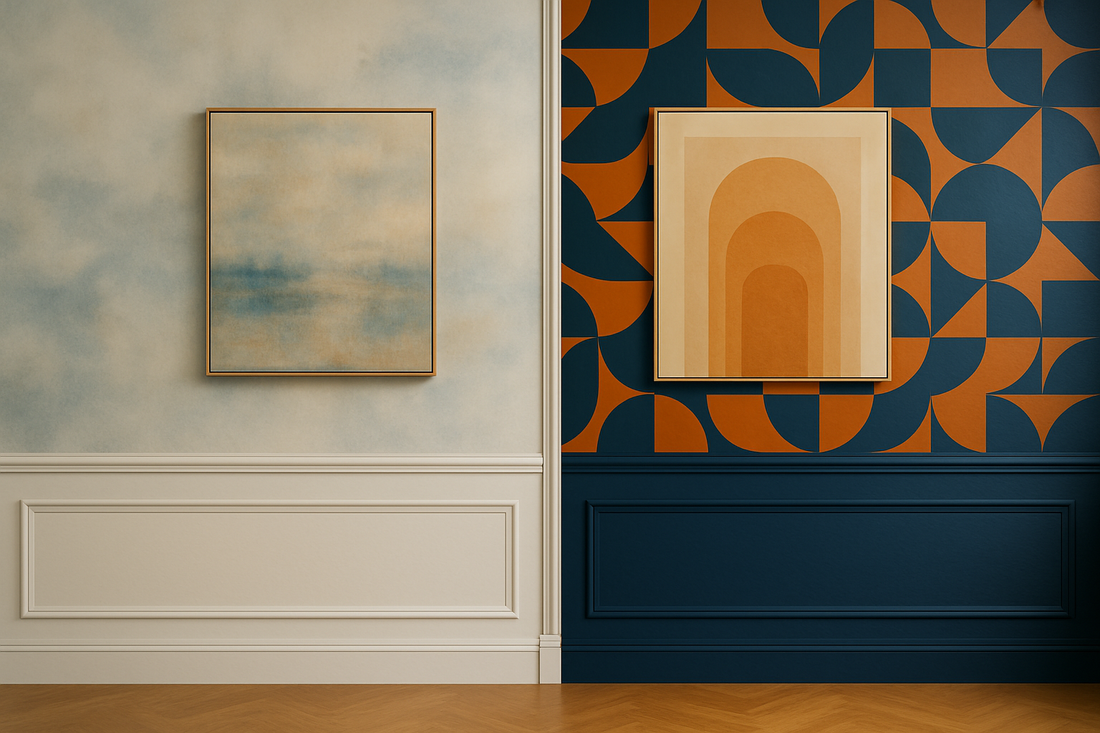
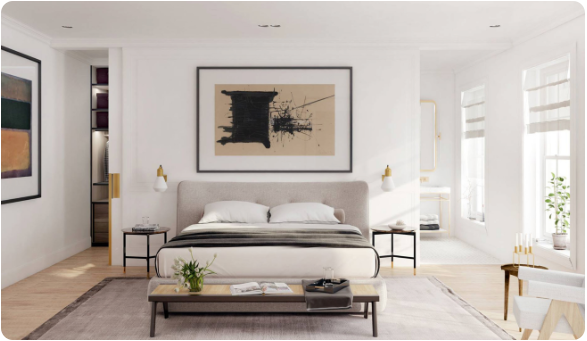
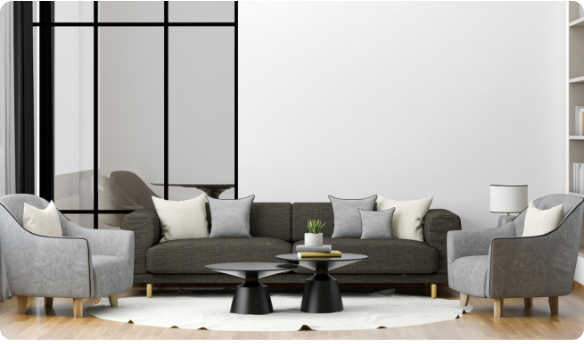
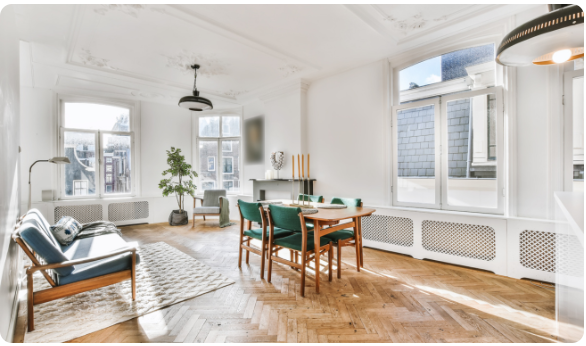
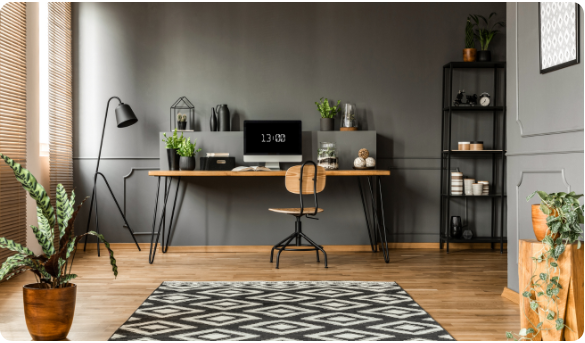

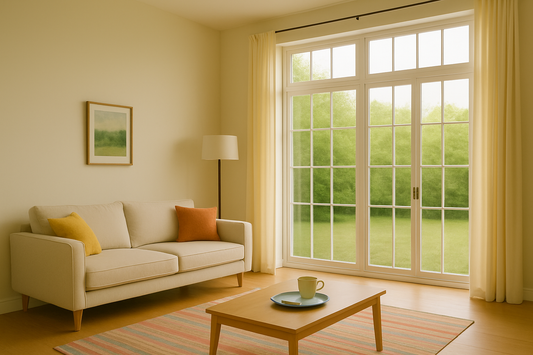
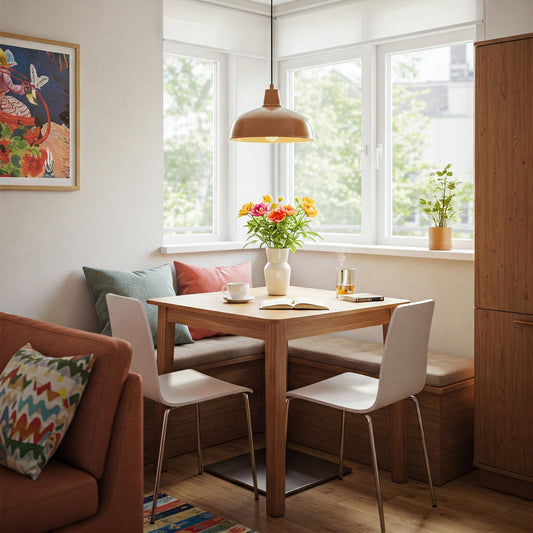
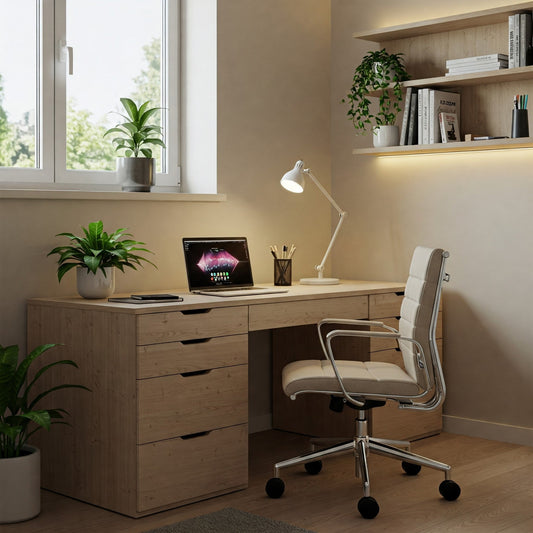





 Company
Company Customer Support
Customer Support SHIPPING INFO
SHIPPING INFO